
Building applications using MongoDB?
Explore how OpenDataDSL makes it easy to build and manage applications using MongoDB Atlas.Introduction
MongoDB is by far the most popular document database and with their cloud Atlas offering, they provide the best Document DAAS (Database As A Service) offering around.
OpenDataDSL uses MongoDB Atlas for storage of all the resources and is an easy programming language for managing data.
If you are building applications using MongoDB, take a look at how OpenDataDSL can accelerate your time-to-market by providing many of the features you need out-of-the-box.
What you get out-of-the-box
User Interfaces
- A user-friendly web portal which you can whitelabel to make it your own.
- An Excel Add-In to read and write MongoDB data using Excel (Desktop and Web).
- Development environment in Microsoft VSCode for easy coding using our DSL (4GL language)
An Excel Add-in
Read and write MongoDB Atlas data from Excel!
- Search and filter your MongoDB collections
- Pull data into Excel
- Change and write it back to MongoDB (If you have the rights)
- Write a partial document to merge with an existing document
- Add data validation to ensure data quality
- Add default values for missing data - even lookup from other documents!
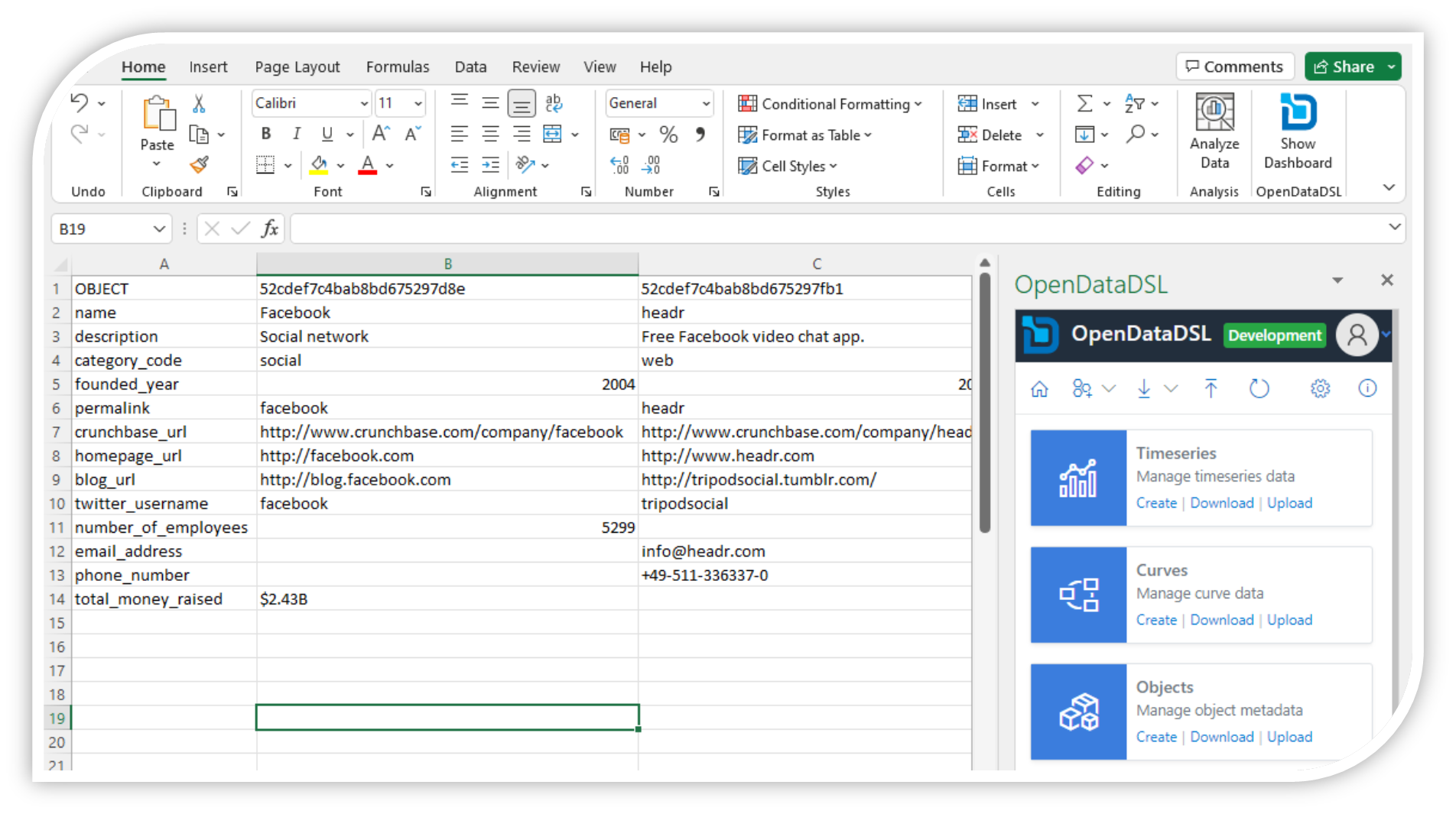
Data management programming language
A simple basic-like language with data management specific syntax.
An example of finding some data in the object collection filtering on a property called source.
objects = find top 15 ${object} where source="EURONEXT"
for o in objects
print o.id + " " + o.dataset
next
Inter-document relationships
Create 'links' to other documents which improve your users' navigation ability.
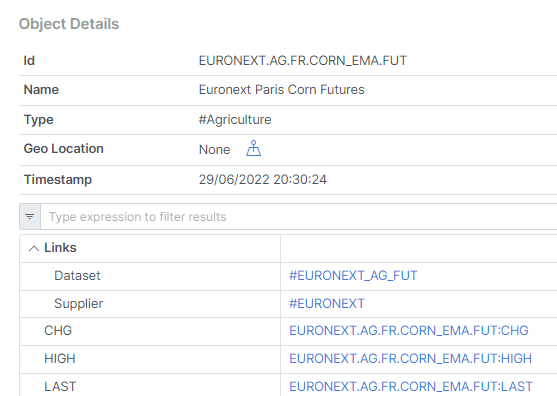
Geo-spatial data
Include geo-spatial information (points, polygons and lines) in your documents to build a filterable map using Google Maps.
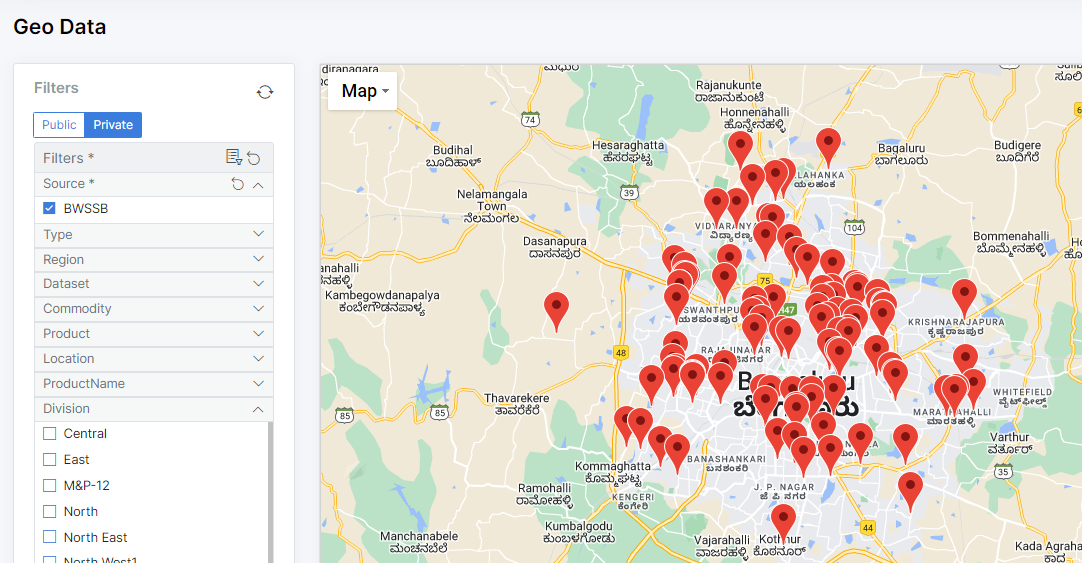
Document versioning
Never lose any data with built-in, automatic versioning of documents, data and entities. Older versions of documents are stored in archive collections with full tagging and rollback capabilities.
Automatic filtering
Define which fields in your documents are 'dimensions' that you want to filter on in the Web Portal
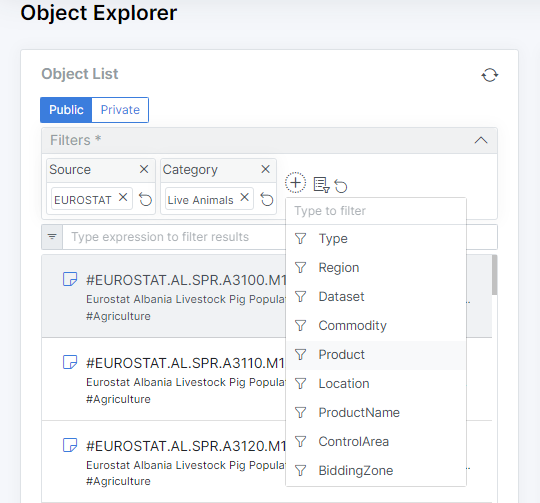
Comprehensive ETL
Use our world-class ETL components to extract data from anywhere, transform it into your data model and load it into MongoDB.
An example using the ODSL language, creating a transformer to convert an input XML file into documents to be loaded into MongoDB.
print "> Creating tx"
tx = transform xml into #ForeignExchange as fx
// Transform ECB daily FX rates to type #ForeignCurrency
create with Cube
unique id = "ECB_FX_EUR" + fx.currency
SPOT = TimeSeries(xml.Cube.Cube.time, "BUSINESS", fx.rate)
category = "Foreign Exchange"
product = "ECB_FX"
provider = "European Central Bank"
model = "EUR" + fx.currency
description = "European Central Bank reference rates EUR/" + fx.currency
base = "EUR"
currency = fx.currency
end
XML=${xml:"https://www.ecb.europa.eu/stats/eurofxref/eurofxref-daily.xml"}
result = tx.run(XML)
print result
Built-in Timeseries, Curves and Events
Robust management of Timeseries, Curve and Event data. Convert discrete events into Timeseries and curves.
Smart Data
Create formulas and expressions that dynamically enhance your 'raw' Timeseries, Curves and Events
Conversions
Easily convert values to different currencies and units on-the-fly with the built-in conversion intelligence.
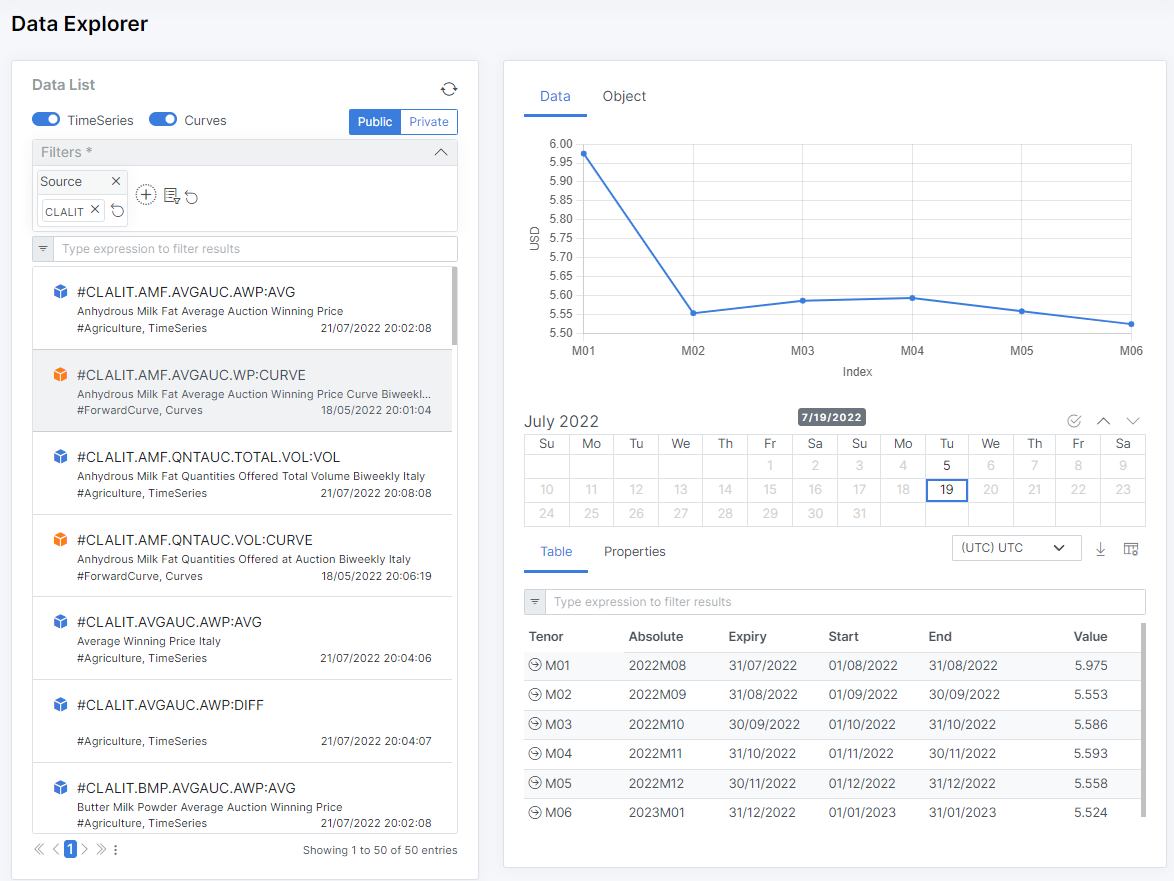
Workflows, actions and processes
Build comprehensive workflows with your own custom actions to load or process data. Run scheduled or event-driven processes
Monitor your processes from your mobile device or the web.
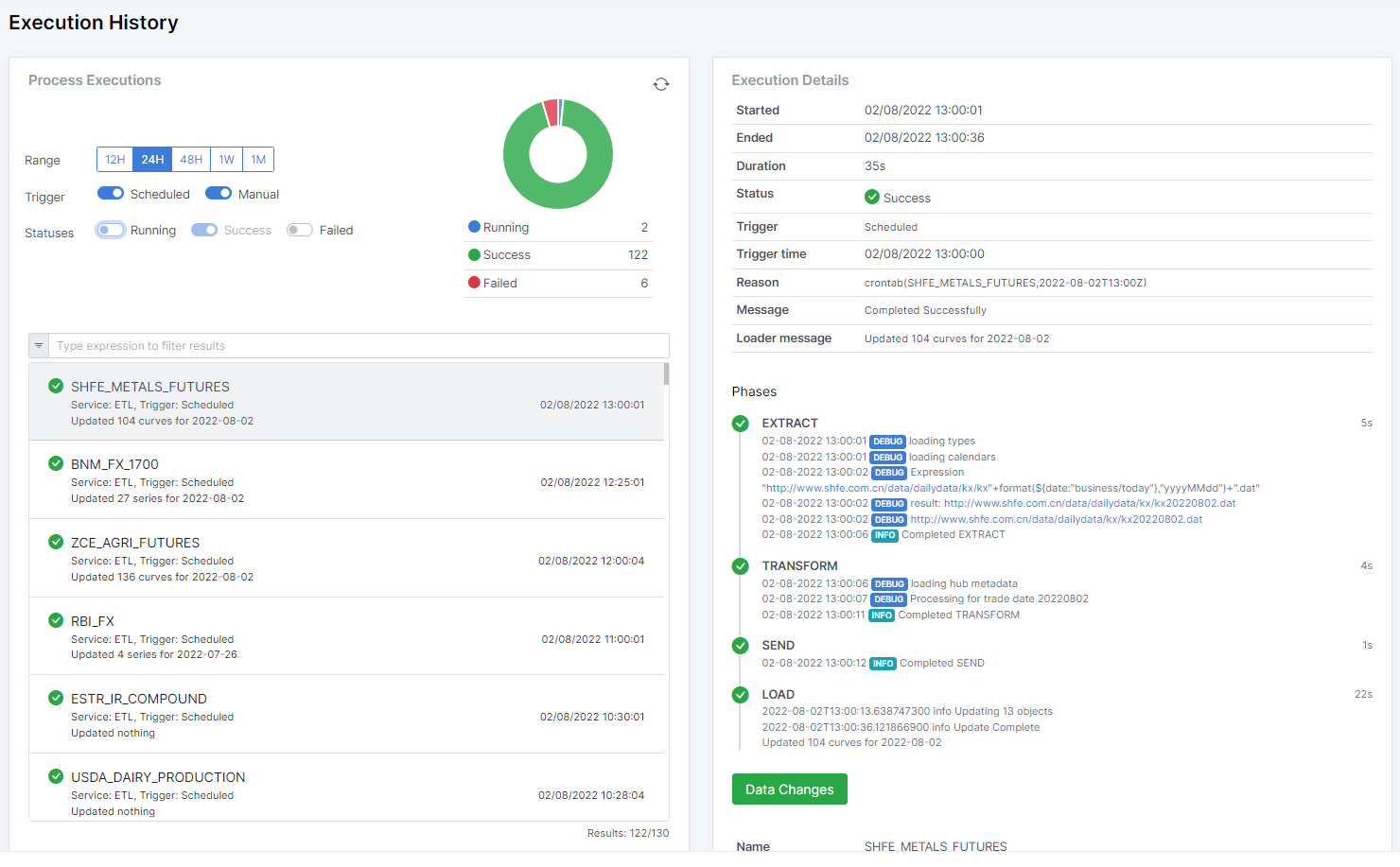
Multiple environments
Get access to multiple data environments for feature development, data previewing etc. Improve data releases by pre-staging data and 'merging' to production when ready.
Each environment is a separate MongoDB database, so you can be certain of complete data partitioning.
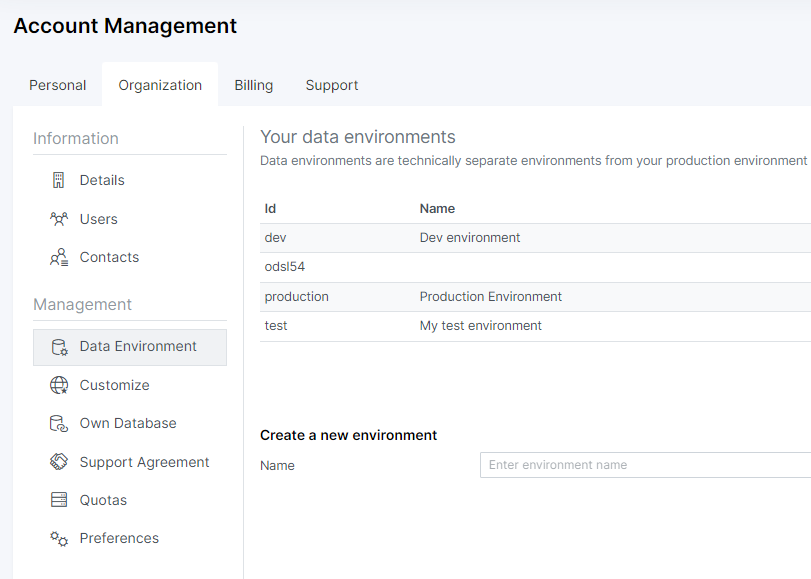
Use your own MongoDB Atlas connection
You can supply a connection string to your own MongoDB Atlas so you can remain in control of your data and your costs.
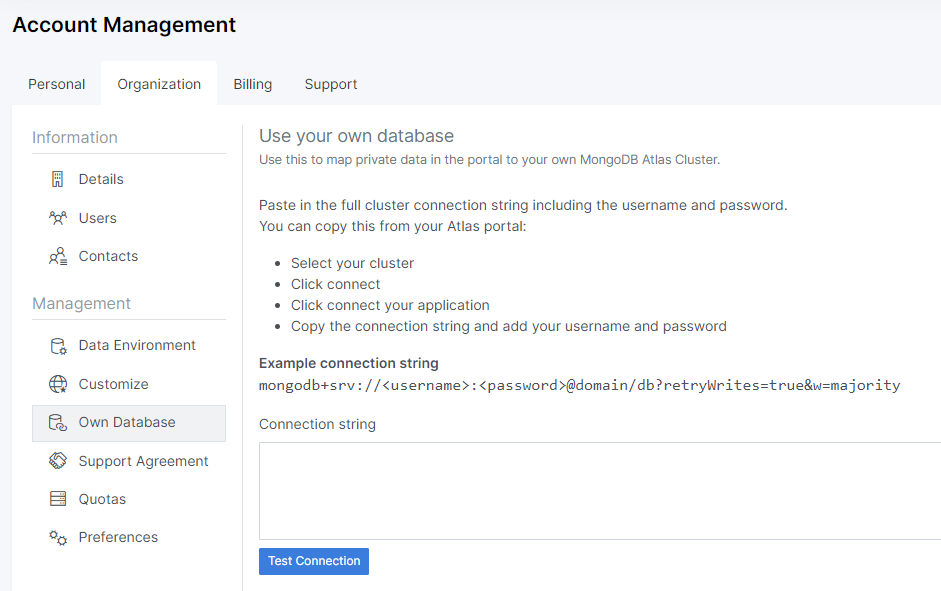
Message queues
Integrate your MongoDB data with your internal systems using message queues.
Subscribe to data changes and push data to queues to be consumed by your internal systems.
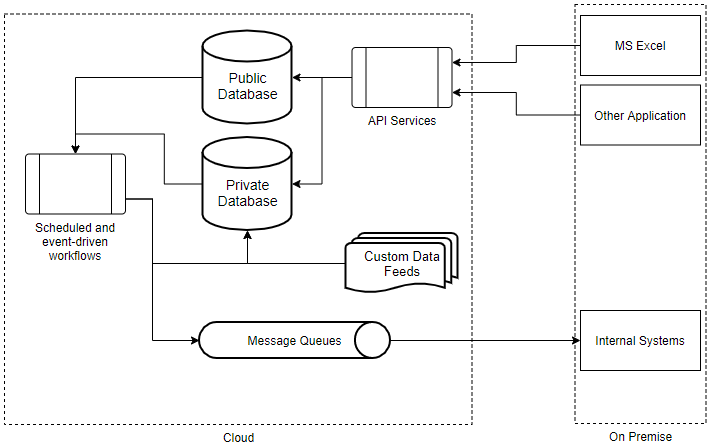
Auditing
Comprehensive audit logs to identify changes and user activity

More information or free trial?
Tell us about your project, and we can let you know how we can help.
Contact us at info@opendatadsl.com
